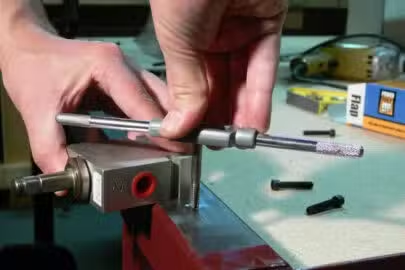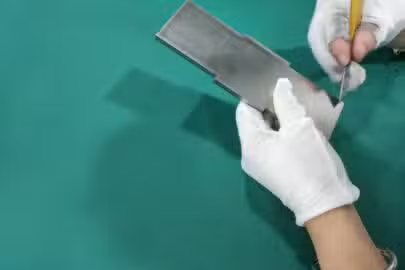In precision manufacturing, the synergy between design and machining plays a pivotal role in determining the success of a project. This is where Design for Manufacturability (DFM) takes into the spotlight, particularly in CNC mills and lathes.
Design Guidelines for machinability refer to principles and considerations aimed at optimizing the design of parts and components to enhance their manufacturability using CNC lathes and mills. It streamlines the manufacturing process by aligning the design of parts with the capabilities and constraints of CNC milling and lathe machining technologies.
The article explores the complex field of machinability and explains design principles essential for maximizing CNC machining’s potential. We will also explore key drives to machinability and how to overcome the challenges encountered in DFM.
Introduction to DFM for CNC Machining

Design for Manufacturability (DFM) for CNC machining involves optimizing product designs to enhance the efficiency of the manufacturing process using CNC machining. The focus is on streamlining the production of precision parts, minimizing costs, and improving overall manufacturability. DFM considerations for CNC machining include simplifying part geometries to align with CNC machine capabilities. This involves minimizing complex features, sharp angles, and overly intricate details that could pose challenges during machining.
Material selection is a crucial aspect, emphasizing the choice of materials that are easy to machine. The materials must also exhibit good machinability characteristics and meet the mechanical properties required for the final product. Defining accurate tolerances and surface finish requirements is essential to ensure precision in CNC-machined parts. This contributes to meeting both functional and aesthetic standards. DFM also involves optimizing toolpaths for CNC machining, aiming for efficiency in tool changes, reducing machining time, and enhancing overall productivity. Strategic toolpath planning minimizes unnecessary movements and changes, aligning with the part’s geometry.
Considerations for feature placement and accessibility ensure that features are strategically located on the part. This minimizes the need for frequent tool changes and repositioning. This approach contributes to a smoother manufacturing process and reduces the risk of errors. By integrating DFM principles into the design phase, designers and engineers can optimize their products for CNC machining. As a result, they experience a more efficient and cost-effective manufacturing process. This collaborative approach enhances the success of CNC-machined components, ensuring they meet design specifications while being feasible for production.
Key Drivers of Machinability

Several crucial factors influence machinability, each pivotal in determining the success of CNC milling and turning processes. In this section, we explain the key drivers that significantly affect the efficiency and effectiveness of machining operations.
Tool Selection and Optimization
The careful selection and optimization of cutting tools are essential for machinability. The selection of tool materials, coatings, and geometries is necessary. The chosen tool type directly impacts the precision machining process, influencing critical factors such as tool life, cutting forces, and surface finish. Manufacturers can make informed decisions that optimize tool performance and add to the overall success of CNC tuning and milling operations by investigating the nuances of tool characteristics.
Workpiece Material Compatibility
Understanding how the material properties of the workpiece interact with cutting tools is paramount for achieving optimal machinability. This driver emphasizes the importance of selecting materials that align with the capabilities of CNC milling and turning processes. Examining the compatibility between workpiece materials and cutting tools ensures that the machining operation proceeds smoothly, minimizing challenges and contributing to efficient material removal.
Cutting Speeds and Feeds
Investigating the complexities of setting cutting speeds and feeds reveals a delicate balance that significantly impacts machinability. The primary objective is to achieve efficient material removal without jeopardizing tool integrity. This entails an in-depth look at spindle speed and feed rate, considering the dynamic interplay between these variables. Optimizing cutting speeds and feeds improves the effectiveness of CNC milling and turning processes by ensuring precision and minimizing cutting tool wear.
Coolant and Lubrication Strategies
The application of coolant and lubrication significantly impacts machining performance. Understand the importance of proper coolant selection and application techniques for temperature control, chip evacuation, and tool longevity.
Principles of Designing Parts for CNC Machinability
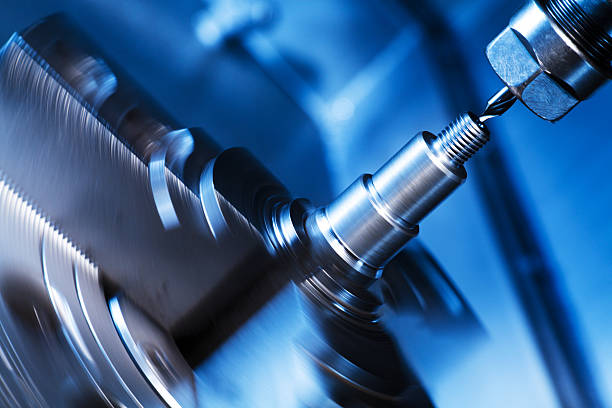
Efficient CNC machinability depends on strategic design principles that optimize a part’s material selection and geometric aspects. Understanding these principles ensures a harmonious synergy between design intent and manufacturability.
Material Selection
Choosing the right material is a foundational step in designing for CNC machinability. Considerations such as material hardness, thermal conductivity, and machinability ratings are pivotal. Explore how different materials interact with cutting tools and their impact on tool wear, surface finish, and overall machining efficiency.
Geometry Guidelines
The geometry of a part plays a pivotal role in its machinability. Designers are encouraged to strategically incorporate rounded corners and fillets, reducing stress concentration and minimizing tool wear during machining. Additionally, simplifying part geometries by minimizing undercuts contributes to smoother machining processes.
Manufacturing Process Advice
Optimizing the manufacturing process is essential for achieving efficient CNC machining. This involves meticulous planning of toolpaths to minimize tool changes and movements, enhancing overall machining efficiency. Addressing workholding challenges through thoughtful design considerations also ensures stability during machining, reducing vibrations and improving precision.
Design Recommendations by Operation Type
The principles of designing part machinability also depend on design recommendations according to the operation type.
- Milling DFM Tips: For milling operations, 3D profiling for complex shapes is recommended. Optimizing toolpaths to minimize tool changes and reduce wear is crucial for prolonged tool life and increased efficiency in the milling process.
- Turning DFM Guidelines: Turning operations benefit from prioritizing simplicity in part geometry. Designers should choose appropriate tooling based on turning requirements, ensuring the tools align with the desired outcomes.
- Drilling DFM Advice: Effective drilling requires careful design considerations. Designing for optimal chip evacuation and selecting appropriate drill geometries based on hole requirements contribute to the success of drilling operations. Minimizing drill length also enhances stability during drilling.
General DFM Suggestions
A clear definition of tolerances and surface finish requirements is paramount in the broader context of Design for Manufacturability (DFM). Effective communication between design and machining teams fosters a collaborative environment, allowing for the early identification and resolution of potential challenges. Encouraging iterative design processes with feedback loops ensures continuous improvement in part manufacturability, contributing to more streamlined and efficient CNC machining processes.
Tools for Optimizing Machinability
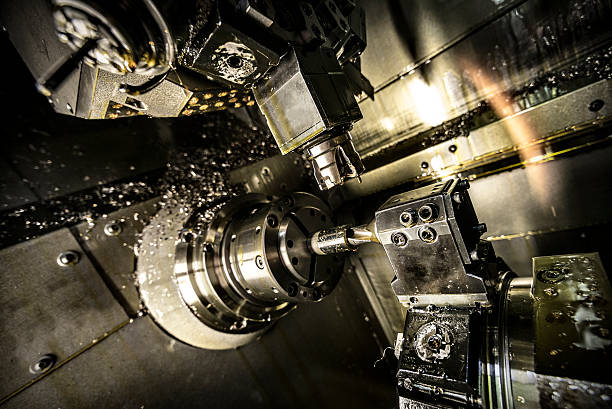
Tools for optimizing machinability encompass various resources and strategies to enhance efficiency and precision in CNC machining. Here are key tools commonly employed in the pursuit of optimized machinability:
Cutting Tool Selection Criteria
The choice of cutting tools significantly influences machinability. Criteria include tool material, coatings, and geometries tailored to specific machining requirements. Selecting the right tool is crucial for achieving optimal results.
Toolpath Simulation Software
Toolpath simulation tools provide a virtual representation of the machining process. This aids in visualizing the tool’s movement, detecting potential issues, and optimizing toolpaths for improved efficiency, reduced cycle times, and minimized errors.
Material Testing Protocols
Establishing protocols for testing materials helps determine their machinability characteristics. Understanding how different materials respond to specific cutting tools informs material selection, contributing to enhanced tool life and overall machining performance.
Advanced Toolpath Strategies
Embrace cutting-edge toolpath strategies that go beyond conventional approaches. Adaptive machining, high-speed cutting, and trochoidal milling can significantly boost machining efficiency, especially in complex geometries.
Fixture Design and Optimization
Well-designed fixtures contribute to stable and precise machining. Proper fixturing ensures workpiece stability, reducing vibrations and improving the accuracy of machining operations.
Overcoming DFM Limitations
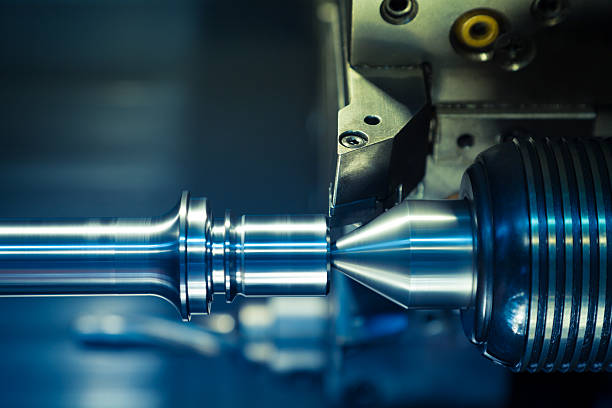
Design for Manufacturability (DFM) is a powerful approach but comes with challenges. This section explores strategies and solutions to overcome common limitations associated with DFM, ensuring a more seamless integration of design and manufacturing processes.
Complex Geometries
Address the challenges posed by intricate part geometries. Explore simplification, advanced toolpath strategies, or additive manufacturing techniques to overcome complexities without compromising manufacturability.
Material Constraints
Navigate limitations imposed by material properties. Investigate alternative materials, hybrid material approaches, or post-processing treatments that can expand the range of feasible options for achieving design and manufacturing objectives.
Tight Tolerances
Tackling tight tolerances can be demanding. Discuss strategies for optimizing machining processes, selecting appropriate measuring tools, and implementing quality control measures to ensure precise adherence to tolerances.
Cost Considerations
Recognize the impact of design decisions on manufacturing costs. Explore ways to balance design intent with cost-effectiveness, considering factors like material waste, machining time, and tooling expenses.
DFM Implementation Benefits
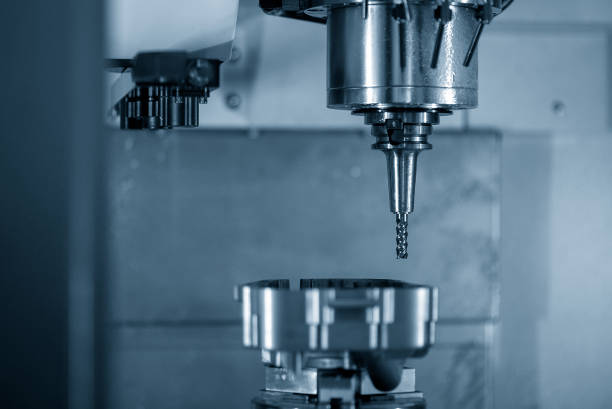
Implementing Design for Manufacturability (DFM) principles yields various advantages that resonate across the entire product development lifecycle. This section explores the different benefits of incorporating DFM into the design process.
Cost Reduction
DFM minimizes production costs by optimizing material usage, reducing scrap, and streamlining manufacturing processes. By identifying and addressing manufacturability issues early in the design phase, unnecessary expenses are mitigated.
Accelerated Time-to-Market
Streamlining the design for manufacturability expedites the overall product development timeline. Efficient machining processes, reduced iterations, and rapid prototyping contribute to a faster time-to-market for new products.
Enhanced Quality and Consistency
DFM ensures that designs are inherently suited for the chosen manufacturing processes, resulting in higher quality and consistency in the final product. This minimizes defects, rework, and the likelihood of post-production issues.
Improved Design Robustness
Designs optimized for manufacturability are more robust against variations in the manufacturing environment. This resilience enhances the reliability and performance of the product under different production conditions.
Facilitates Collaboration
DFM fosters collaboration between design and manufacturing teams. By considering manufacturing constraints early, designers and machinists can work together to find innovative solutions, improving communication and understanding.
Environmental Impact Reduction
Optimizing manufacturing processes through DFM often reduces material waste and energy consumption, contributing to a more sustainable and environmentally friendly approach to production.
Conclusion
The “Design Guidelines for Machinability – DFM for CNC Mills & Lathes” journey reveals an intricate approach to joining design creativity with CNC machining precision. The Design for Manufacturability (DFM) principles highlighted here provide a comprehensive framework for designers and engineers. These principles emphasize the delicate balance required for success, from material selection to geometry guidelines and manufacturing process advice. The insights into milling, turning, and drilling operations, combined with general DFM recommendations, enable designers to navigate the complexities of CNC machining efficiently.
At Zintilon, we can bring your designs to life with our unmatched efficiency and precision. Our commitment to excellence is backed by robust manufacturing capabilities fueled by extensive engineering expertise. Utilizing cutting-edge 3, 4, and 5-axis CNC machines alongside a comprehensive range of auxiliary tools, we empower your CNC designs, whether crafting custom prototypes or producing intricate parts with low-volume production timelines spanning months. You can upload your design files to our site for an instant quotation. You can also contact our professional engineers for expert designs and machinability feedback.
Read More
- Different Types of Stainless Steel and Their Applications – Zintilon
- Medical Friendly Materials: Top 6 Medical Grade Materials You Should Know – Zintilon
- Mastering Die Casting Mold – Design, Functionality, and Advancements – Zintilon
- Jigs and Fixtures: A Comprehensive Guide to Precision in Machining Operations – Zintilon
- Laser Welding: Definition, How It Works, and Application in Part Manufacturing – Zintilon



